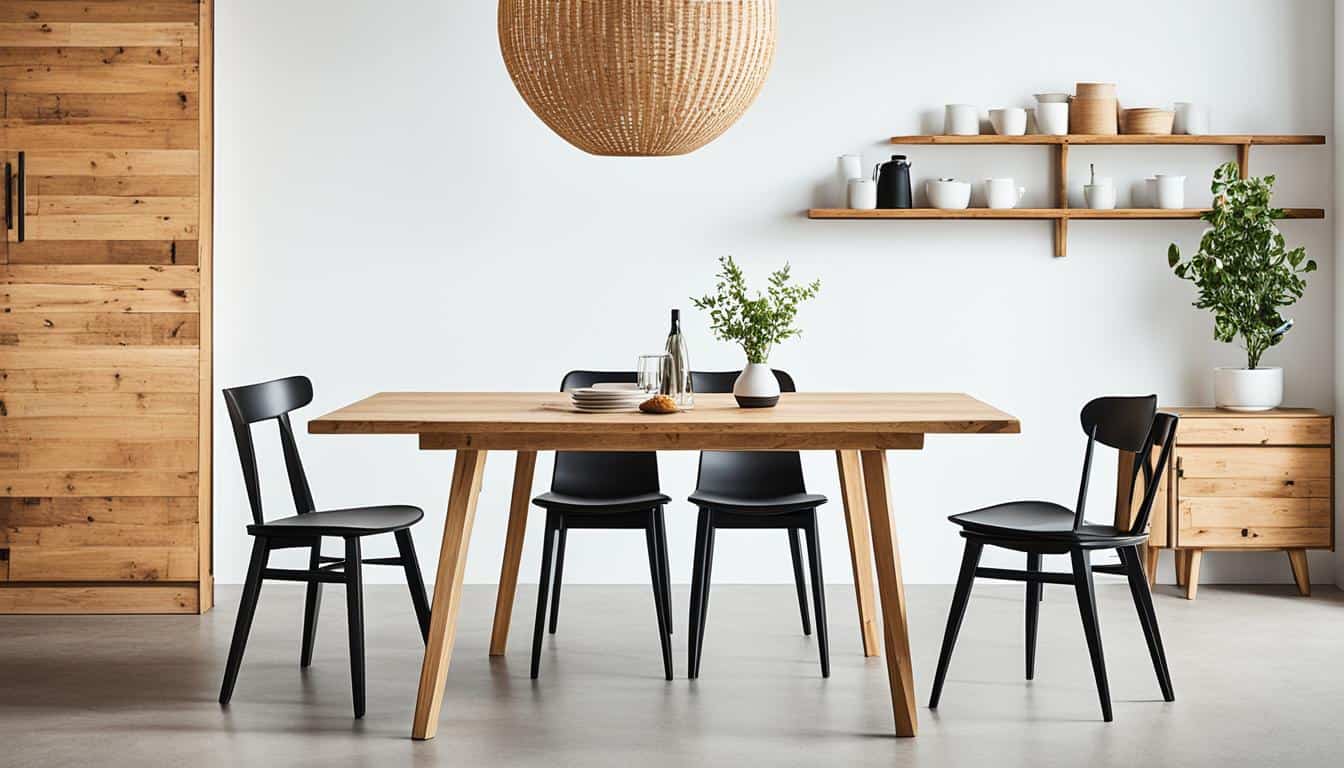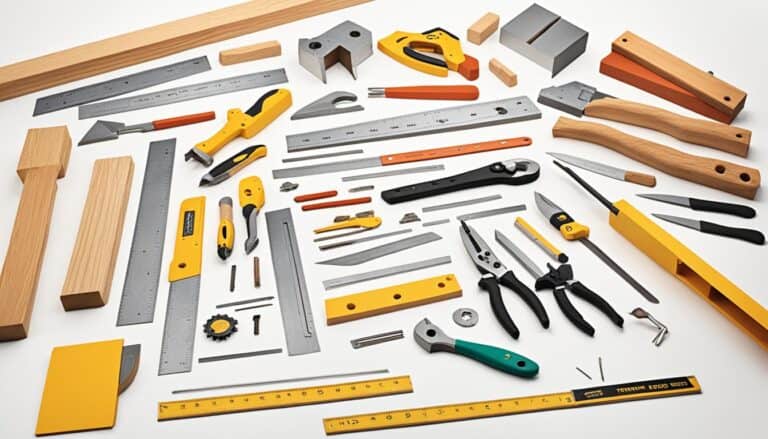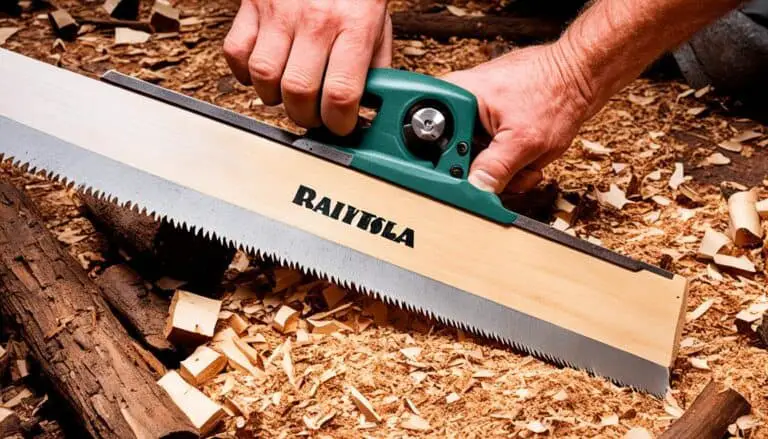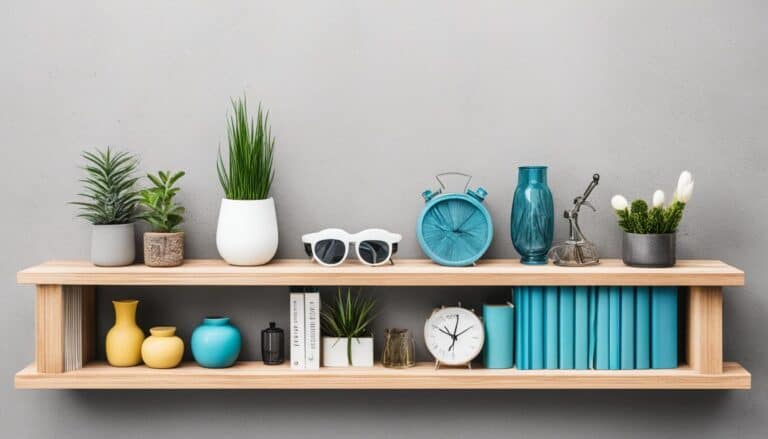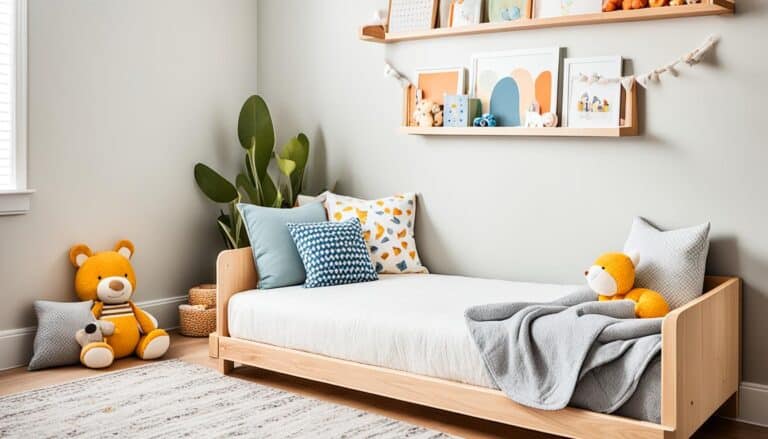Are you ready to take your kitchen to the next level? Imagine having a kitchen table that perfectly fits your style and space, a table that you built with your own two hands. With these DIY kitchen table plans, you have the power to create a one-of-a-kind centerpiece for your kitchen. But how do you get started? What tools and materials do you need? And what are the secrets to building a sturdy and beautiful kitchen table? Get ready to unleash your creativity and transform your kitchen with a DIY kitchen table that’s truly your own.
Key Takeaways:
- Building your own kitchen table allows you to have complete control over the design and size.
- With step-by-step instructions and a guide to follow, even beginners can build a kitchen table.
- Essential tools for building a kitchen table include a Kreg Jig, miter saw, drill, nail gun, and sander.
- Choosing the right design is crucial to create a kitchen table that reflects your personal style.
- Proper finishing and maintenance will ensure that your DIY kitchen table remains beautiful and functional for years to come.
Why Build a Kitchen Table Yourself?
Building a kitchen table yourself allows you to have complete control over the design and size of the table. You can customize it to fit your specific needs and preferences. It’s also a great woodworking project that can be both enjoyable and rewarding. With step-by-step instructions and a guide to follow, you can easily build a kitchen table even if you’re a beginner.
“Building your own kitchen table is a creative journey that allows you to express your personal style and create a unique piece of furniture for your home.”
Not only does building a kitchen table give you the opportunity to showcase your woodworking skills, but it also allows you to create a piece that perfectly fits your space and style. Whether you prefer a rustic farmhouse table or a sleek modern design, you can choose the materials, dimensions, and finishes that suit your taste.
By building your own kitchen table, you can also save money compared to buying a pre-made table. The cost of materials and tools may be lower than purchasing a ready-to-use table, allowing you to invest your money in other home improvement projects. Plus, the satisfaction that comes with completing a project from start to finish is priceless.
Even if you are new to woodworking, building a kitchen table can be a manageable project. With the right guidance and resources, you can learn the necessary skills and techniques along the way. There are many online tutorials, videos, and forums available that provide detailed instructions and tips for building a kitchen table.
Benefits of Building a Kitchen Table Yourself:
- Complete control over design and size
- Customizable to fit your specific needs and preferences
- Opportunity to showcase your woodworking skills
- Cost savings compared to buying a pre-made table
- Satisfaction and pride in creating something with your own hands
Building a kitchen table yourself is a rewarding endeavor that allows you to unleash your creativity and create a beautiful and functional piece of furniture. Whether you’re an experienced woodworker or a beginner looking for a new project, the process of building a kitchen table can be both fulfilling and enjoyable.
Now that you understand the benefits of building a kitchen table yourself, let’s explore the essential tools and materials you’ll need for this project.
Tools and Materials Needed
To build a kitchen table, you’ll need a few essential tools and materials. These include:
- Kreg Jig: Used for joining boards together with strong joints.
- Miter Saw: Essential for cutting the wood to the desired lengths.
- Drill: Needed for making holes for the assembly process.
- Nail Gun: Used to secure pieces together quickly and securely.
- Sander: Helps in smoothing surfaces for a finished look.
In addition to the tools, you’ll also require various screws for assembly. Pocket hole screws and wood screws are commonly used for securing the table components together. After completing the construction, you’ll want to enhance the appearance of the table. To do this, you can use either stain or paint to give the wood a beautiful finish. It’s important to protect the table as well, so applying a wood finish such as polyurethane or polycrylic will help to preserve its longevity.
Furthermore, you’ll need sandpaper to prepare the wood surfaces for painting or staining. A variety of grits ranging from coarse to fine will be useful for achieving smooth and polished surfaces. Finally, when assembling the table, wood glue is necessary for helping to secure joints and create sturdy connections.
Summary:
The essential tools and materials for building a kitchen table include a Kreg Jig, miter saw, drill, nail gun, sander, pocket hole screws, wood screws, stain or paint, wood finish, sandpaper, and wood glue.
| Tools | Materials |
|---|---|
| Kreg Jig | Pocket Hole Screws |
| Miter Saw | Wood Screws |
| Drill | Stain or Paint |
| Nail Gun | Wood Finish |
| Sander | Sandpaper |
| Wood Glue |
Understanding the Kreg Jig
The Kreg Jig is a versatile tool that is commonly used in woodworking projects, including building kitchen tables. This innovative tool allows you to create strong joints by joining two boards together easily. Whether you’re a beginner or an experienced woodworker, the Kreg Jig is designed to be user-friendly and produce high-quality results.
Using a Kreg Jig is a straightforward process, especially when you follow a tutorial on how to use it. With step-by-step instructions and practice, you’ll quickly master this tool and be able to create professional-level joints for your kitchen table project.
Once you understand how to use a Kreg Jig, you’ll appreciate its efficiency and effectiveness in joining boards securely. This tool eliminates the need for complicated joinery techniques and allows you to achieve precise and reliable results.
Whether you’re building a farmhouse-style table or a sleek modern design, the Kreg Jig can be an invaluable tool in your woodworking arsenal. By using this tool to create strong, sturdy joints, you can ensure that your kitchen table will withstand the test of time and be a beautiful centerpiece in your home.
Advantages of Using a Kreg Jig
- Easy to Use: The Kreg Jig is designed with simplicity in mind, making it accessible for woodworkers of all skill levels.
- Strong Joints: By utilizing pocket holes, the Kreg Jig creates joints that are both sturdy and reliable.
- Time-Saver: With the Kreg Jig, you can quickly join boards together without the need for complex joinery techniques.
How to Use a Kreg Jig
- Set up your Kreg Jig according to the thickness of your boards.
- Position the board to be drilled in the jig, ensuring it is secure and properly aligned.
- Drill pocket holes using a suitable bit size.
- Repeat the process for the other board to be joined.
- Apply wood glue to the adjoining edges of the boards.
- Align the boards and secure them using appropriate screws through the pocket holes.
- Allow the glue to dry and sand any rough edges if necessary.
Expert Tip
When using a Kreg Jig, it’s important to choose the right screw length for your project. The screw should be long enough to securely join the boards without protruding through the surface.
| Benefits of Using a Kreg Jig | How to Use a Kreg Jig |
|---|---|
| 1. Easy to use | 1. Set up your Kreg Jig according to the thickness of your boards |
| 2. Strong, reliable joints | 2. Position the board to be drilled in the jig, ensuring it is secure and properly aligned |
| 3. Time-saving | 3. Drill pocket holes using a suitable bit size |
Choosing the Right Design
When building your own kitchen table, you have the opportunity to choose a design that reflects your personal style. Whether you prefer a rustic farmhouse look or a sleek modern vibe, there are endless options to consider. Here are some popular kitchen table design ideas to inspire you:
1. Modern Farmhouse Tables
Modern farmhouse tables combine the warmth of traditional farmhouse aesthetics with contemporary design elements. These tables often feature distressed wood finishes, X-shaped legs, and a blend of natural materials for a timeless yet trendy look.
2. Round or Square Tables
Round or square kitchen tables are a great choice for maximizing seating capacity in a small space. They offer a more intimate and cozy dining experience and can be paired with various chair styles to create a unique atmosphere in your kitchen.
3. Customized Designs
If you have a specific vision for your kitchen table, consider customizing existing plans or designing one from scratch. This allows you to tailor the table to your exact specifications, ensuring it fits perfectly in your space and matches your desired aesthetic.
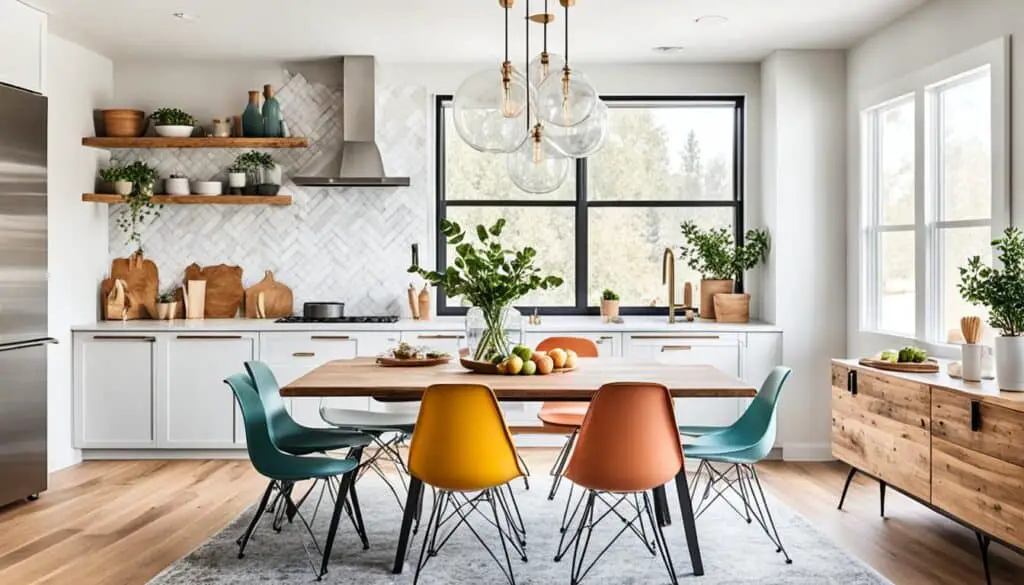
With the right measurements and materials, you can bring your vision to life and create a stunning centerpiece for your kitchen. Whether you prefer a traditional, contemporary, or unique design, building a custom kitchen table allows you to personalize your space and make a statement.
Step-by-Step Guide to Building a Kitchen Table
Building a kitchen table is an exciting project that allows you to create a beautiful and functional piece of furniture for your home. Follow this step-by-step guide to ensure a successful and rewarding woodworking experience.
1. Plan and Measure
Before getting started, determine the design and dimensions of your kitchen table. Consider the available space and your personal preferences. Once you have the measurements, create a detailed plan that includes the number of legs, the size of the tabletop, and any additional features.
2. Gather the Materials and Tools
Next, gather all the necessary materials and tools for the project. This may include wood boards, screws, sandpaper, a drill, a saw, a Kreg Jig, and wood glue. Make sure you have everything you need before beginning the construction process.
3. Cut the Wood
Using a saw, carefully cut the wood according to the dimensions specified in your plan. Take your time and ensure precise cuts for accurate assembly. Sand down any rough edges to create a smooth finish.
4. Assemble the Legs and Aprons
Start by assembling the legs and aprons of the table. Use the appropriate screws and wood glue to securely attach the pieces. Follow your plan and double-check the measurements to ensure a sturdy and level base for your table.
5. Attach the Tabletop
With the legs and aprons in place, it’s time to attach the tabletop. Position the tabletop on the assembled base and use screws to securely fasten it. Ensure that it is centered and level before moving on to the next step.
6. Sand and Finish
Once the table is fully assembled, sand it down to smooth any rough surfaces and edges. This step is crucial for achieving a professional and polished look. After sanding, apply your desired finish, such as stain or paint, to protect the wood and enhance its appearance.
7. Enjoy Your Homemade Kitchen Table
Congratulations! You’ve successfully built your own kitchen table. Place it in your desired location and enjoy the satisfaction of using a piece of furniture that you created with your own hands.
Remember, building a kitchen table requires patience, attention to detail, and the use of proper safety precautions. Take your time throughout the process, following each step carefully. With practice and experience, you can become a skilled woodworker and tackle even more challenging projects in the future.
DIY Kitchen Table Plans
Building your own kitchen table from scratch can be a rewarding and cost-effective project. With the help of free DIY kitchen table plans, you can create a beautiful and functional table that fits your style and space perfectly. Whether you prefer a simple farmhouse design or a more intricate look, there are plans available to guide you through the process.
“Creating a personalized kitchen table allows you to showcase your craftsmanship and create a unique piece of furniture for your home.”
Here are some popular DIY kitchen table plans that you can consider:
1. Modern Farmhouse Dining Table
The modern farmhouse style has gained popularity in recent years. This plan provides detailed instructions on how to build a sturdy and stylish dining table that features clean lines and a rustic charm. With its versatile design, it will complement various kitchen decors.
2. Pottery Barn-Inspired Dining Table
If you love the timeless elegance of Pottery Barn furniture, this plan is for you. It offers a step-by-step guide to creating a dining table inspired by their classic designs. You can customize it to your desired size and finish to achieve a high-end look for less.
3. DIY Round Kitchen Table
A round kitchen table can add a touch of sophistication to your dining area. This plan provides instructions on building a round table with a sturdy base and a tabletop that accommodates seating for four or more. It’s perfect for cozy breakfast nooks or small dining spaces.
4. DIY Outdoor Dining Table
If you enjoy outdoor entertaining, a DIY outdoor dining table is a great addition to your patio or backyard. This plan guides you through building a weather-resistant table using durable materials. You can finish it with a protective coating to ensure it withstands the elements.
By following these DIY kitchen table plans, you can create a customized table that meets your specific needs and style preferences. With clear instructions and diagrams, these plans make the building process accessible to both beginners and experienced woodworkers.
Remember, building a kitchen table requires attention to detail and proper measurements. Take your time, follow the instructions closely, and make sure to use the appropriate tools and materials for the best results.
Popular DIY Kitchen Table Plans
| Plan Name | Description |
| ———————————— | ——————————————————————————————————————————————————————————————————- |
| Modern Farmhouse Dining Table | Create a stylish dining table with clean lines and rustic charm. |
| Pottery Barn-Inspired Dining Table | Build a high-end dining table inspired by Pottery Barn designs. |
| DIY Round Kitchen Table | Construct a round kitchen table for small dining spaces or cozy breakfast nooks. |
| DIY Outdoor Dining Table | Build a weather-resistant dining table for outdoor entertaining. |
Choose a plan that suits your style and skill level, gather your materials, and embark on the exciting journey of building your own kitchen table. With some time and effort, you’ll have a unique piece of furniture that you can be proud of for years to come.
Tips for Building a Sturdy Table
When constructing your kitchen table, it’s important to prioritize stability and durability to ensure it withstands the test of time. Here are some essential tips to help you build a sturdy and reliable table:
1. Use Strong Joinery Techniques
For secure connections and added strength, employ strong joinery techniques such as pocket hole screws and wood glue. These methods create robust bonds between the tabletop, legs, and aprons of your kitchen table.
2. Choose High-Quality Wood
Investing in high-quality wood is crucial for a sturdy table. Opt for hardwoods such as oak, maple, or cherry, as they are known for their durability and resistance to warping or splitting. Additionally, ensure the wood is properly dried and free of cracks to prevent structural issues in the future.
3. Properly Prepare the Wood
Before assembly, it’s essential to properly prepare the wood to enhance its stability. Smooth rough edges and surfaces with sandpaper to prevent splinters and ensure a seamless fit when connecting different parts of the table.
4. Reinforce with Additional Support
Incorporating additional support elements can significantly improve the table’s stability. Consider adding a middle stretcher beneath the tabletop or using diagonal bracing to reinforce the legs. These reinforcements distribute weight evenly, preventing any wobbling or sagging over time.
5. Consider Table Design
When selecting the design, keep in mind that certain styles may naturally provide more stability. For instance, trestle or pedestal tables often offer better support compared to tables with four individual legs. Choosing a design that prioritizes stability can contribute to the overall sturdiness of your kitchen table.
By following these construction tips, you can ensure that your kitchen table remains sturdy and reliable for years to come.
| Construction Tips | Benefits |
|---|---|
| Use strong joinery techniques | – Provides secure connections |
| Choose high-quality wood | – Increases durability |
| Properly prepare the wood | – Ensures smooth surfaces |
| Reinforce with additional support | – Enhances stability |
| Consider table design | – Improves overall sturdiness |
Finishing and Maintenance
Once your kitchen table is assembled, it’s important to apply a finish to protect the wood and enhance its appearance. Choosing the right kitchen table finish can make a big difference in how your table looks and how well it stands up to daily use.
Types of Kitchen Table Finish
There are two popular options for finishing your kitchen table: stain and paint. Stain is a great choice if you want to highlight the natural beauty of the wood grain. It comes in a variety of shades and can be easily applied with a brush or cloth. Paint, on the other hand, allows you to add a pop of color and create a more contemporary look. It’s important to note that paint may require multiple coats and additional drying time.
“The choice between stain and paint ultimately depends on your personal preference and the style of your kitchen. Both options can provide a beautiful and durable finish.”
Protective Coat
Regardless of whether you choose stain or paint, it’s crucial to apply a protective coat to safeguard your kitchen table from daily wear and tear. A popular choice is polyurethane, a clear topcoat that provides excellent durability and resistance to spills, scratches, and heat. Another option is polycrylic, which is water-based and dries quickly, making it ideal for projects with limited time. Apply the protective coat according to the manufacturer’s instructions, ensuring even coverage and allowing sufficient drying time between coats.
Maintaining Your Kitchen Table
To keep your kitchen table looking its best and prolong its lifespan, regular maintenance is key. Here are a few tips to help you maintain your kitchen table:
- Use coasters or placemats to protect the table from hot or wet objects.
- Avoid dragging heavy or sharp objects across the table surface to prevent scratches or dents.
- Clean spills promptly with a mild soap and water solution, using a soft cloth or sponge. Avoid abrasive cleaners that can damage the finish.
- Avoid placing the table in direct sunlight, as prolonged exposure to UV rays can cause fading or discoloration.
By following these simple maintenance tips, you can ensure that your kitchen table remains beautiful and functional for years to come.
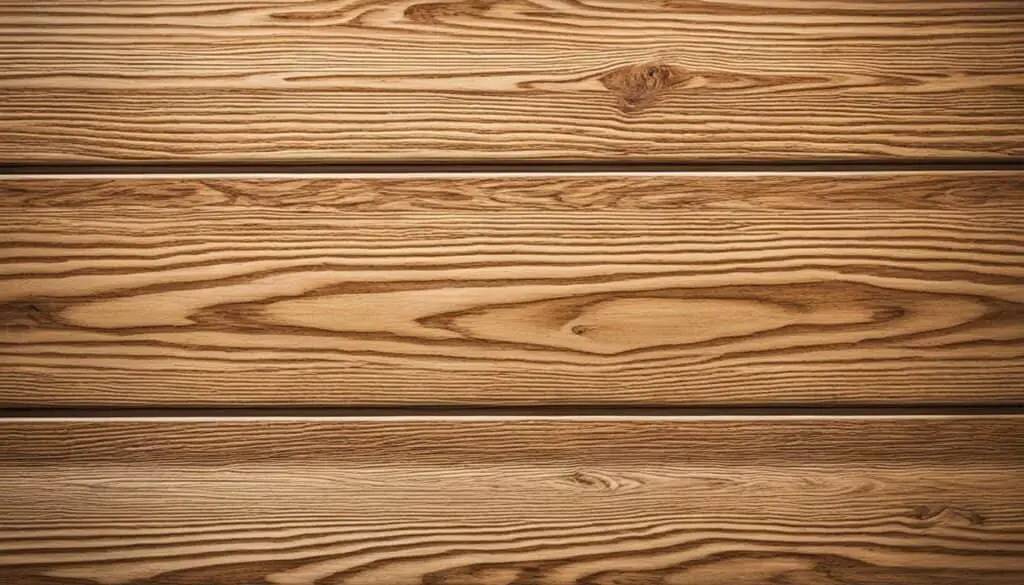
| Finish | Pros | Cons |
|---|---|---|
| Stain | Enhances wood grain, natural look | May require additional coats |
| Paint | Offers variety of colors, contemporary look | May require more drying time |
| Polyurethane | Excellent durability, heat and scratch resistance | Strong odor during application |
| Polycrylic | Quick drying, water-based | Requires multiple coats for optimal protection |
Inspiration from Others
If you’re in need of ideas and inspiration for your DIY kitchen table project, you’re in luck! There are numerous sources you can turn to for creative input and guidance.
Social media platforms such as Instagram and Pinterest are treasure troves of photos and ideas shared by other DIY enthusiasts. Just search for keywords like “DIY kitchen table ideas” or “kitchen table project inspiration” to discover a wide range of design styles, materials, and techniques. These platforms allow you to explore different aesthetics and gather visual inspiration for your own unique kitchen table.
Another fantastic way to find inspiration is by joining online woodworking communities or forums. Here, you can engage with like-minded individuals who are passionate about DIY woodworking projects. These communities often provide a platform for members to share their finished projects, offer advice, and answer questions. By participating, you can gain valuable insights and ideas from experienced builders and fellow enthusiasts, boosting your confidence and expanding your woodworking skills.
“I was struggling to come up with design ideas for my DIY kitchen table, but then I discovered a whole world of inspiration on Instagram. Seeing what others had accomplished gave me the confidence to try new designs and techniques. It’s amazing how a single photo can spark your creativity!” – Samantha, DIY Enthusiast
Exploring Creative Woodworking Achievements
By immersing yourself in the projects and accomplishments of others, you can gather a variety of ideas and insights to inspire your own kitchen table project. Whether it’s a unique leg design, an interesting tabletop pattern, or a combination of materials, each project offers something worth exploring and integrating into your own build.
Additionally, consider visiting woodworking exhibitions, trade shows, or local workshops to view professionally crafted kitchen tables and gain inspiration from the work of skilled artisans. Seeing these masterpieces up close can provide a whole new level of inspiration and help you understand the intricate details and craftsmanship that go into creating a beautiful kitchen table.
Comprehensive Online Resources
Take advantage of various online resources that specialize in DIY projects and provide comprehensive guides, tutorials, and plans specifically tailored to building kitchen tables. These resources often include step-by-step instructions, detailed measurements, and design considerations to help you create a practical and aesthetically pleasing table.
Check out popular woodworking websites or platforms dedicated to DIY projects, such as Ana White or Shanty 2 Chic. These sites offer a wide range of free kitchen table plans and instructions, allowing you to choose from various styles and skill levels. You can browse through different designs, read user reviews, and select a plan that fits your vision and skill set.
| Source | Description |
|---|---|
| Ana White | A website that provides free woodworking plans and tutorials for a wide range of projects, including kitchen tables. |
| Shanty 2 Chic | A popular DIY blog featuring detailed and easy-to-follow instructions for building various furniture pieces, including kitchen tables. |
| Woodworking magazines | Magazines such as Woodsmith, Popular Woodworking, and Fine Woodworking often feature project plans and inspiring stories from experienced woodworkers. |
Remembering Your Unique Touch
While it’s important to draw inspiration from others, don’t forget to incorporate your own personal style and preferences into your kitchen table design. Use the ideas and techniques you’ve gathered as a foundation, but feel free to add your own creative twists and customizations. This way, your kitchen table will truly be a reflection of your unique taste and personality.
By exploring various sources of inspiration and adapting them to your own DIY kitchen table project, you’ll be able to create a one-of-a-kind piece that stands out in your home.
Benefits of DIY Kitchen Tables
Building your own kitchen table offers several advantages over buying a pre-made table. Not only does it allow you to create a personalized design that fits your needs and preferences, but it also provides cost savings and a sense of pride in completing a DIY woodworking project.
1. Personalization
When you build your own kitchen table, you have the freedom to customize every aspect of its design and size. This means you can create a table that perfectly complements your kitchen decor and fits the available space. Whether you prefer a rustic farmhouse style, a sleek modern design, or something completely unique, the possibilities are endless.
2. Cost Savings
Building your own kitchen table can be a cost-effective option compared to purchasing a ready-made table from a store. DIY tables often require fewer materials, and you have the choice to select affordable yet high-quality wood. By investing your time and effort, you can save money without compromising on the durability or functionality of the table.
3. Sense of Pride and Satisfaction
Completing a woodworking project, such as building your own kitchen table, brings a great sense of accomplishment. Knowing that you created a unique piece of furniture with your own hands is incredibly rewarding. Plus, you’ll have a one-of-a-kind table that adds character to your home and becomes a conversation starter when guests come over.
By taking the DIY route, you not only enjoy the advantages of personalization and cost savings, but you also gain valuable woodworking skills and create a lasting piece of furniture that reflects your individual style and taste.
| Benefits | Description |
|---|---|
| Personalization | Create a table that suits your style and space perfectly. |
| Cost Savings | Materials for DIY tables are often more affordable than store-bought options. |
| Sense of Pride | Enjoy the satisfaction of completing a woodworking project and having a unique piece of furniture in your home. |
“Building your own kitchen table allows you to unleash your creativity and showcase your woodworking skills while saving money in the process.”
Safety Considerations
When engaging in woodworking projects, including building a kitchen table, it’s essential to prioritize safety. Here are some important woodworking safety tips and precautions to keep in mind to ensure a safe and accident-free work environment.
1. Wear protective gear
Always wear the appropriate protective gear when working with tools and wood. Safety glasses will protect your eyes from flying debris, and hearing protection will help prevent damage from loud power tools.
2. Use tools correctly
Familiarize yourself with the proper use and handling of each tool before starting any woodworking project. Follow the manufacturer’s instructions and guidelines to ensure safe operation.
3. Follow recommended safety practices
Adhere to commonly recommended safety practices, such as keeping your fingers away from blades and cutters, using push sticks when necessary, and never reaching over or across a spinning blade.
4. Work in a well-ventilated area
Woodworking can release dust and fumes that can be harmful if inhaled. Always work in a well-ventilated area or use appropriate dust collection systems to minimize respiratory risks.
5. Ensure proper lighting
Good lighting is essential to avoid accidents and make accurate cuts. Ensure your workspace is well-lit, especially around power tools and cutting areas.
6. Keep your workspace clean and organized
Maintain a clean and clutter-free workspace to prevent tripping hazards and promote better focus. Keep all tools and materials properly stored when not in use.
By following these woodworking safety tips and taking proper precautions when building a kitchen table, you can minimize the risk of accidents and injuries, ensuring a safe and enjoyable woodworking experience.
Tools for Expanding Your Woodworking Skills
If you’re interested in expanding your woodworking skills beyond building kitchen tables, there are many resources available to help you learn and improve.
Online tutorials and classes provide step-by-step instructions and techniques for various woodworking projects. Whether you want to learn how to carve intricate designs or master joinery techniques, these resources offer comprehensive guidance to enhance your woodworking abilities.
Woodworking books and magazines are also valuable sources of inspiration and knowledge. They feature experienced woodworkers sharing their tips, tricks, and project ideas, giving you a chance to learn from the best in the field. These resources cover a wide range of topics, from basic techniques to advanced woodworking concepts.
For those who prefer hands-on learning, joining woodworking clubs or workshops is an excellent way to connect with like-minded individuals and gain practical experience. These communities provide a supportive environment where you can exchange knowledge, collaborate on projects, and learn from the expertise of others.
By taking advantage of these woodworking resources, you can broaden your skill set, explore new techniques, and unlock your full potential as a woodworker.
Showcasing Your Finished Kitchen Table
Now that you’ve completed your DIY kitchen table, it’s time to share your masterpiece with the world. Showcasing your finished project not only allows you to take pride in your work but also inspires others to get creative with woodworking.
Here are a few ideas on how you can display and share your kitchen table:
- Take Photos and Post on Social Media: Capture the beauty of your kitchen table by taking high-quality photos and sharing them on social media platforms like Instagram, Facebook, and Twitter. Use relevant hashtags, such as #woodworkingprojects and #kitchentabledesigns, to reach a wider audience and connect with fellow woodworkers.
- Create a Blog or Website: If you’re passionate about woodworking and want to showcase all your projects, consider creating a blog or website dedicated to your woodworking journey. You can write about your experiences, share detailed instructions on how you built your kitchen table, and even offer tips and tricks to aspiring woodworkers.
- Enter Woodworking Contests or Exhibitions: If you’re feeling ambitious and confident in your skills, why not enter your kitchen table in woodworking contests or exhibitions? These events provide an opportunity to compete with other talented woodworkers, gain recognition for your craftsmanship, and potentially win prizes.
By sharing your finished kitchen table, you not only showcase your talent but also inspire and motivate others to explore their own woodworking projects. Furthermore, you can join the vibrant woodworking community, receive valuable feedback, and connect with like-minded individuals who share your passion for woodworking.
Where to Find DIY Kitchen Table Plans
If you’re looking to build your own kitchen table, there are several online sources where you can find free DIY plans. These resources offer a wide range of designs for various styles and skill levels. Check out the following websites, books, and magazines to get started on your DIY kitchen table project:
Websites
- Shanty 2 Chic – This website provides detailed plans and step-by-step instructions for building a variety of furniture, including kitchen tables. They offer plans for different styles and sizes, allowing you to find the perfect design for your home.
- Ana White – Ana White’s website is a treasure trove of free woodworking plans. You’ll find a wide selection of kitchen table plans, along with helpful tutorials and tips to assist you throughout the building process.
Books and Magazines
- Visit your local library or bookstore and look for woodworking books that feature kitchen table plans. Popular titles include “The Complete Book of Woodworking” by Tom Carpenter and “Woodworking Basics: Mastering the Essentials of Craftsmanship” by Peter Korn. These books often provide detailed instructions and diagrams to guide you through the project.
- Woodworking magazines such as “Popular Woodworking” and “Fine Woodworking” frequently feature project plans, including kitchen tables. These publications offer a wealth of inspiration, tips, and techniques from experienced woodworkers.
By exploring these resources, you’ll be able to find the perfect DIY kitchen table plan that suits your style and skill level. Selecting a trustworthy source ensures you have access to detailed instructions and expert guidance throughout your project.
Conclusion
Building your own kitchen table is a rewarding and fulfilling project that allows you to create a unique piece of furniture for your home. With the right tools, materials, and plans, you can successfully build a kitchen table that suits your style and space. Whether you’re a beginner or have some woodworking experience, these DIY kitchen table plans provide a comprehensive guide to help you through the process.
By following the step-by-step instructions and using the recommended tools and techniques, you can confidently embark on your woodworking journey and enjoy the satisfaction of creating something beautiful and functional. Not only will you have a kitchen table that reflects your personal style, but you will also have the pride of knowing that you built it with your own two hands.
So, why wait? Start exploring the various kitchen table design ideas and choose a plan that speaks to you. Gather the necessary tools and materials, and get ready to unleash your creativity and woodworking skills. With these DIY kitchen table plans, the possibilities are endless, and the result will be a stunning centerpiece for your kitchen that you can proudly say you built yourself.
FAQ
Why should I build a kitchen table myself?
Building your own kitchen table allows you to personalize the design and size according to your needs and preferences. It can also be a cost-effective option and provides a sense of pride and satisfaction.
What tools and materials do I need to build a kitchen table?
You will need a Kreg Jig, a miter saw, a drill, a nail gun, a sander, various screws, wood finish, sandpaper, and wood glue.
How do I use a Kreg Jig?
A Kreg Jig is used to join two boards together and create strong joints. You can learn how to use it by following a tutorial.
How can I choose the right design for my kitchen table?
There are various design ideas to consider, ranging from modern farmhouse tables to round or square tables. You can also create a custom design by modifying existing plans or designing one from scratch.
What is the step-by-step process for building a kitchen table?
The process involves measuring and cutting the wood, assembling the pieces, and finishing the table. It is best to follow a detailed guide or plan for each step.
Where can I find DIY kitchen table plans?
There are many free DIY kitchen table plans available online on websites such as Shanty 2 Chic and Ana White. You can also find plans in woodworking books, magazines, and online communities.
How can I ensure that my kitchen table is sturdy and long-lasting?
To ensure durability, use strong joinery techniques, choose high-quality wood, and reinforce the table with additional support such as stretchers or bracing.
How do I finish and maintain my kitchen table?
Apply a wood finish such as stain or paint to protect the wood and enhance its appearance. Regular maintenance involves cleaning the table with a mild soap and water solution and using coasters or placemats to prevent damage.
Where can I find inspiration for my DIY kitchen table project?
Social media platforms like Instagram and Pinterest, online woodworking communities, and woodworking forums are great sources of inspiration.
What are the benefits of building my own kitchen table?
Building your own kitchen table allows you to personalize the design and size, it can be cost-effective, and provides a sense of pride and satisfaction.
What safety considerations should I keep in mind when building a kitchen table?
It is important to wear protective gear, use tools correctly, work in a well-ventilated area, and keep your workspace clean and organized to minimize the risk of accidents and injuries.
How can I expand my woodworking skills beyond building a kitchen table?
Online tutorials, classes, woodworking books, magazines, and joining woodworking clubs or workshops are great resources for learning and improving your woodworking skills.
How can I showcase my finished kitchen table?
You can take photos and share them on social media platforms, create a blog or website dedicated to your woodworking projects, or even enter your table in woodworking contests or exhibitions.
Where can I find free DIY kitchen table plans?
Websites like Shanty 2 Chic and Ana White offer a wide range of free DIY kitchen table plans. You can also find plans in woodworking books, magazines, and online communities.


